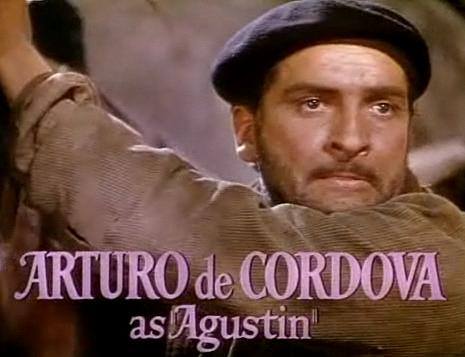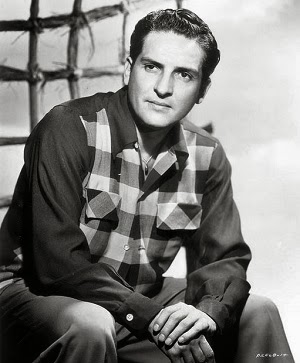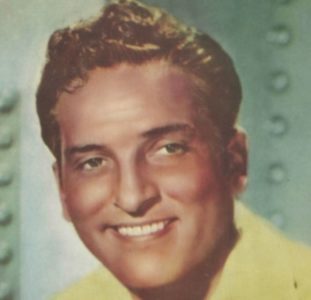
ARTURO DE CÓRDOVA, ACTOR DESCENDIENTE CUBANO DESTACADO DURANTE LA ÉPOCA DE ORO DEL SIGLO DE ORO MEXICANO. FOTOS.
Arturo García Rodríguez nació en México el 7 de mayo de 1907, conocido como Arturo de Córdova, fue un actor protagonista de la llamada “Época de Oro del Cine Mexicano”, filmó más de un centenar de películas como galerista urbano de cine negro, dramas psicológicos y comedias urbanas. Poseía una voz profunda, de matices sonoros y un ligero acento argentino, que lo acompañaría en todas sus interpretaciones.
Sus padres fueron Arturo García Pujol e Isabel Rodríguez Echeverría Muro, ambos cubanos residentes en Mérida.
Hasta los siete años vivió en su ciudad natal. Luego su familia lo llevó a Estados Unidos donde estuvo hasta los 12 años, cuando se mudaron a Argentina y posteriormente enviaron a sus padres a Suiza a estudiar idiomas. Todo este peregrinar de la familia obedeció al miedo y al deseo de huir de la vorágine revolucionaria que sacudía al país, en esos años.
En la primera etapa de los Premios Ariel entre 1947 y 1958, cuando se interrumpió la entrega hasta el año 1972, fue el actor con más nominaciones en la categoría Mejor Actor por su trabajo en: El bosque de fuego (1947), Medianoche (1950), El hombre sin rostro (1951) y Mi mujer y la otra (1953), siendo también en ese período el más laureado, al ganar en las otras tres ocasiones por las películas: En la palma de tu mano (1952), Las tres perfectas casadas (1954) y Feliz año nuevo, mi amor (1958).
También en 1948 por su actuación en ‘Dios se lo Pague’ fue galardonado con el premio al Mejor Actor y en 1950 recibió una mención especial por su participación en la película Nacha Régules, ambos otorgados por la Academia de las Artes y Ciencias Cinematográficas de Argentina.
ARTURO DE CÓRDOBA EN ESTADOS UNIDOS
En 1932 buscó emigrar a Estados Unidos, pero durante el viaje hizo escala en Mérida para reconocer su ciudad natal, permaneciendo allí varios meses al ser “encantado” por una linda joven llamada Enna Arana, con la que terminó casándose el 23 de agosto de 1933. Tras su matrimonio decidió quedarse en Mérida donde pronto encontró empleo como locutor, pues su voz era clara, sonora y varonil, y su dicción impecable. La “ciudad blanca” pronto se le quedó pequeña y la abandonó para buscar fortuna en la Ciudad de México.
Fue su amigo Roberto Cantú Robert quien le sugirió el cambio de nombre de Arturo García Rodríguez, por el de Arturo de Córdova al hacer su debut cinematográfico, ya que “García” sonaba demasiado común mientras que “de Córdova” tenía cierto empaque aristocrático y remite a la ciudad de Córdoba (Argentina), donde vivió en su infancia.
En 1967 sufrió una embolia cerebral que lo dejó con todo el lado izquierdo del cuerpo paralizado. Falleció el 3 de noviembre de 1973, en la Ciudad de México a causa de un derrame cerebral.

FILMOGRAFIA.
Sus Ultimas producciones.
1960 El amor que yo te di Andres Banister
1960 El esqueleto de la señora Morales Dr. Morales Alternative title: Skeleton of Mrs. Morales
1960 La cigüeña dijo sí
1961 Hay alguien detrás de la puerta Carlos
1961 Los hermanos Del Hierro Narrator
1962 El amor de los amores Fernando
1962 Pecado de juventud Lic. Gumersindo Durán
1962 Cena de matrimonios Carlos
1965 El amor no es pecado (El cielo de los pobres) Juan
1965 El pecador Mario Alternative title: Sinful
1965 The Gangster Antonio Paredes / Tony Wall
1966 Despedida de soltera Narrador
1966 La recta final Narrador
1966 ¿Qué haremos con papá? Juan José Gómez
1966 Juventud sin ley Licenciado Luis Ordorica
1966 Matar es fácil Ángel Urquiza
1967 Los perversos Padre Miguel Antonio
1969 Cuando acaba la noche Doctor Mario Salinas
1970 La agonía de ser madre Luis García Alternative title: Agony to Be a Mother
1971 El profe Gobernador Alternative title: The Professor (final film role).

ARTURO DE CORDOVA, A CUBAN DESCENDANT ACTOR DISTINGUISHED DURING THE GOLDEN AGE OF THE MEXICAN GOLDEN AGE. PHOTOS.
Arturo García Rodríguez born in Mexico on May 7, 1907, known like Arturo de Córdova, was an actor protagonist of the call “Golden Time of the Mexican Cinema”, filmed more than a hundred films as urban galler of black cinema, dramas psychological and urban comedies. He had a deep, sonorous voice nuances and a slight Argentine accent, which would accompany him in all his interpretations.
His parents were Arturo García Pujol and Isabel Rodríguez Echeverría Muro, both Cubans living in Merida.
Until the age of seven he lived in his hometown. Then his family took him to the United States where he was until age 12, when they moved to Argentina and later sent their parents to Switzerland to study languages. All this pilgrimage of the family obeyed to the fear and desire to flee from the revolutionary vortex that shook the country, in those years.
In the first stage of the Ariel Awards between 1947 and 1958, when the delivery was discontinued until the year 1972, was the actor with more nominations in the category Best Actor for his work in: The Forest of Fire (1947), Midnight (1950), The Man Without a Face (1951) and My Wife and the Other (1953),being also in that period the most laureate, winning in the other three occasions for the films: In the palm of your hand (1952), The three perfect married women (1954) and Happy New Year, my love (1958).
Also in 1948 for his performance in ‘Dios se lo Pague’ was awarded with the award for Best Actor and in 1950 received a special mention for his participation in the film Nacha Régules, both granted by the Academy of the Cinematographic Arts and Sciences of Argentina.
ARTURO DE CORDOVA IN THE UNITED STATES
In 1932 he sought to emigrate to the United States, but during the trip made a stopover in Merida to recognize his hometown, staying there several months to be “enchanted” by a pretty young girl named Enna Arana, with which ended up marrying the 23 of August of 1933. Following his marriage decided to stay in Mérida where he soon found employment as a announcer, because his voice was clear, sonorous and manly, and his diction was impeccable. The “white city” soon became small and abandoned to seek fortune in Mexico City.
It was his friend Roberto Cantú Robert who suggested the change of name of Arturo García Rodríguez, for that of Arturo de Córdova when making his cinematographic debut, since “Garcia” sounded too common while “de Córdova” had a certain packaging aristocratic and refers to the city of Cordoba (Argentina), where he lived in his childhood.
In 1967 he suffered a cerebral embolism that left him with all the left side of the paralyzed body He died on November 3, 1973, in Mexico City because of stroke.

Agencies/ Wikipedia/ ArturodeCordovaBio./ Extractos/ Excerpts/ Internet Photos/ Arnoldo Varona/ www.TheCubanHistory.com
THE CUBAN HISTORY, HOLLYWOOD.




 ARTURO DE CÓRDOVA, actor Descendiente de Cubanos y destacado durante la Epoca de Oro del Cine Mexicano. FOTOS. ARTURO DE CORDOVA, a Cuban Descendant actor distinguished during the Golden Age of the Mexican Golden Age. PHOTOS.
ARTURO DE CÓRDOVA, actor Descendiente de Cubanos y destacado durante la Epoca de Oro del Cine Mexicano. FOTOS. ARTURO DE CORDOVA, a Cuban Descendant actor distinguished during the Golden Age of the Mexican Golden Age. PHOTOS.